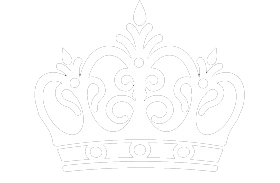How Does the Meaning of Precious Stones Vary Across Cultures and Traditions?
- kukkikja
- Nov 18, 2024
- 3 min read

Precious stones have fascinated humanity for centuries. Beyond their stunning beauty, they hold significant cultural, spiritual, and emotional meanings that vary across the world. The precious stones meaning in different cultures is deeply rooted in history, spirituality, and symbolism, making them more than just ornamental treasures.
Precious Stones in Ancient Civilizations
Egyptian Beliefs:In ancient Egypt, precious stones like lapis lazuli, turquoise, and carnelian were revered for their spiritual significance. Lapis lazuli symbolized the heavens and was often carved into amulets to protect against evil spirits. Egyptians believed turquoise brought protection and good fortune, often incorporating it into jewelry for pharaohs and queens.
Mesopotamia and Babylon:In Mesopotamian cultures, stones such as agate and jasper were seen as protectors against misfortune. They were frequently engraved with prayers and worn as talismans. Jasper, in particular, symbolized healing and strength.
Greek and Roman Traditions:For the Greeks and Romans, precious stones were tied to mythology and power. Amethyst, believed to prevent drunkenness, was named after the nymph Amethystos. Diamonds, on the other hand, symbolized invincibility and were thought to be the tears of gods or fragments of stars.
Asian Perspectives on Precious Stones
India:In Indian culture, gemstones hold deep astrological and spiritual significance. The Navaratna, or "Nine Gems," are central to Vedic astrology, with each gem representing a celestial body. Ruby symbolizes the Sun and vitality, while blue sapphire is linked to Saturn and protection from misfortune. These stones are carefully chosen and worn to align with one’s astrological chart for health, prosperity, and protection.
China:Jade is one of the most cherished stones in Chinese culture, symbolizing purity, moral integrity, and immortality. In ancient China, jade was often associated with the afterlife and used in burial rituals to protect the soul. Red coral, associated with happiness and protection, was also widely used in ornaments and jewelry.
Indigenous and Tribal Uses of Precious Stones
Native American Tribes:Precious stones held spiritual power for Native American cultures. Turquoise, often called the "stone of the sky," was believed to connect the wearer to the heavens and bring protection. Quartz was used in healing ceremonies to channel energy and restore balance.
African Tribes:In African traditions, stones like malachite and garnet were associated with fertility and transformation. Malachite, with its green hues, was seen as a protector against evil spirits and a harbinger of prosperity.
European Symbolism of Precious Stones
Medieval Europe:During the Middle Ages, gemstones were thought to have healing properties. Sapphires symbolized wisdom and purity, and were often used by clergy. Garnets represented courage and were believed to protect warriors in battle.
Victorian Era:The Victorian period saw the rise of personalized gemstone meanings in sentimental jewelry. Gemstones like pearls and opals were often used in mourning jewelry, symbolizing remembrance and love. Romantic messages were encoded through the selection of specific stones to spell words, such as “dearest” using diamond, emerald, amethyst, ruby, emerald, sapphire, and topaz.
Modern Interpretations of Precious Stones Meaning
Western Cultures:Today, gemstones often symbolize milestones, such as engagements, anniversaries, and birthdays. Diamonds remain the ultimate symbol of love, while birthstones personalize jewelry with unique meanings tied to the wearer’s birth month.
Global Influence:As cultures intermingle, gemstone meanings have become more universal. For instance, emeralds are widely recognized as a symbol of rebirth and renewal, while sapphires are seen as a representation of loyalty and truth across many cultures.
How to Honor the Meaning of Precious Stones in Modern Jewelry
The precious stones meaning can guide your choice of jewelry, whether for personal wear or as a gift. Here are some considerations:
Understanding the Context:Research the cultural significance of a stone before selecting it for a specific purpose. For example, jade may be a meaningful gift for someone who values Chinese traditions.
Personal Connection:Choose stones that resonate with your own beliefs or experiences. If you’re seeking clarity and peace, amethyst may be a fitting choice.
Symbolic Gifting:When giving jewelry, consider the stone's cultural symbolism to add depth and sentiment. For instance, a garnet necklace might symbolize courage and strength for someone embarking on a new journey.

Conclusion
The meaning of precious stones transcends borders and generations, offering a glimpse into the shared and diverse ways humans have imbued these natural wonders with significance. Whether it’s the protective properties of turquoise in Native American cultures or the astrological alignment of rubies in Indian tradition, each gemstone carries a rich legacy.
For modern jewelry enthusiasts, understanding these cultural meanings adds a deeper layer of appreciation. By honoring the heritage behind these stones, you not only wear a piece of history but also connect with the timeless narratives they represent.
Whether you’re a collector, designer, or someone looking for the perfect gift, exploring the precious stones meaning across cultures will inspire a more meaningful connection to these natural treasures.

Recent Posts
See AllImagine this… In a little boutique tucked away in the heart of Vienna, a woman runs her fingers across a delicate gold necklace. Its...
























Comments